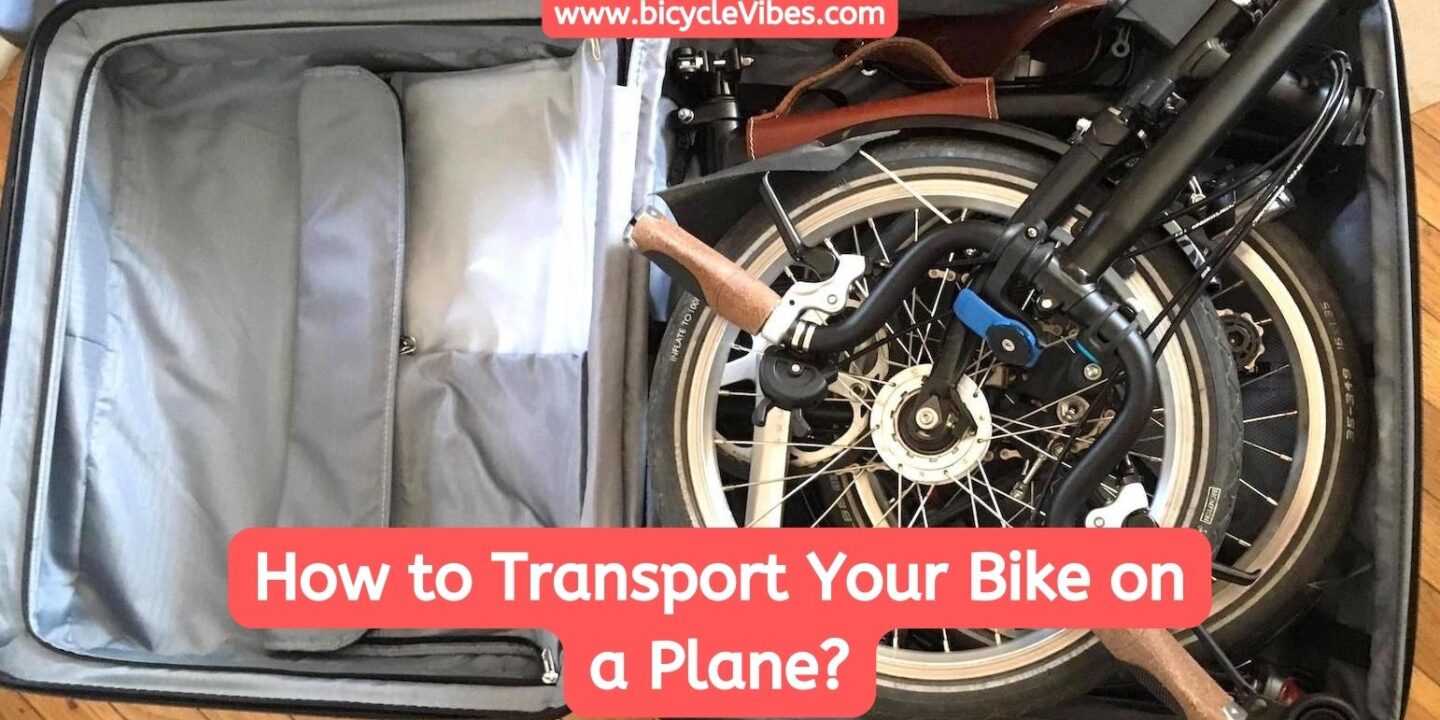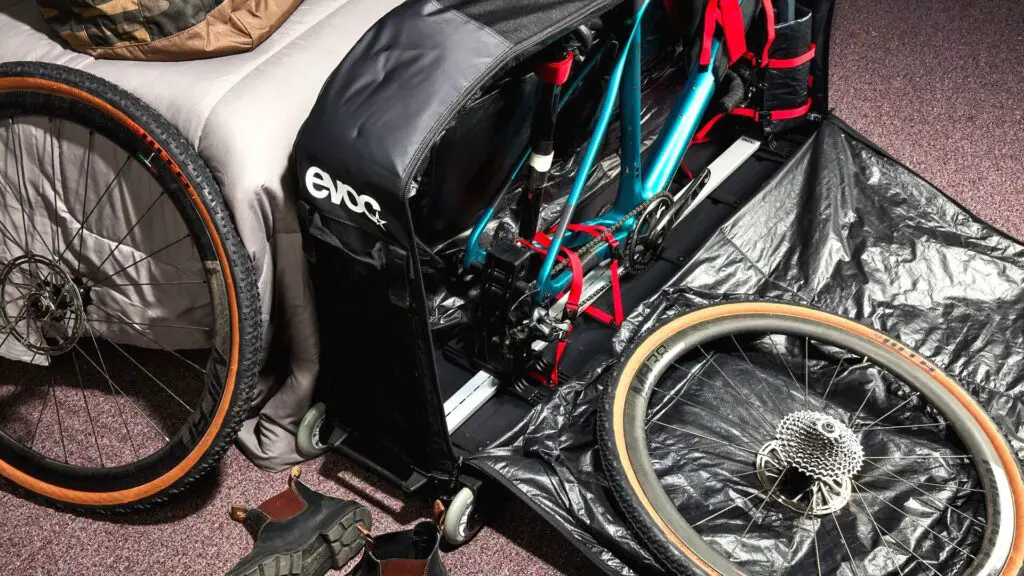
Cycling enthusiasts often need to travel with their bikes. This could be for a competition, a tour, or just to explore new landscapes. However, taking a bike on a plane can be quite challenging.
To make the process easier, there are a few things to keep in mind. Firstly, it’s important to check with the airline beforehand to see what their policy is regarding bike transportation. Some airlines require bikes to be disassembled and packed in a specific way, while others allow them to be checked in as is.
Table of Contents
What do the airlines provide for the transportation of bicycles?

Most airlines do allow bikes to be carried, but there are often limits on weight and size, and regulations may differ between domestic and international travel.
To avoid any surprises or unexpected costs, it’s essential to check with the airline before booking a ticket. This will allow you to find out about the specific rules and fees associated with transporting your bike. Some airlines may charge an additional fee for carrying bikes, while others may include it in the base fare (although this is rare).
How to pack your bike for transport by plane?
If you want to ensure the safety of your bike during air travel, packing it properly is crucial. To protect an expensive or sentimental bike, it’s essential to use a reliable method.
One of the most common ways of packing a bike for air travel is to use a bicycle carrying case. These cases offer excellent protection for your bike and come equipped with padding to absorb shock. Additionally, they are easy to transport and store when you reach your destination.
Another alternative to consider is a bike box, which is typically provided by bike stores for air transportation. These boxes are a less expensive option than carrying cases, but they can be challenging to transport and store once you reach your destination.
Covers and boxes solutions to protect your bike

When selecting a carrying case for your bike, it’s essential to choose between a soft or hard case. Soft cases (on Amazon) are usually lightweight and easy to carry, but they provide less protection than hard cases (on Amazon).
Hard cases are built to deliver maximum protection for your bike. These cases are often fitted with foam and hard plastic shells to absorb shocks effectively. However, they are typically heavier and more challenging to transport than soft covers.
Alternatively, bike boxes (on Amazon) are another option for protecting your bike during air travel. These boxes are typically made of corrugated cardboard and come with padding to safeguard fragile parts such as wheels and derailleurs. While bike boxes are usually less expensive than carrying cases, they tend to be bulkier and more difficult to transport. A pro tip is to ask your bike shop if they have any spare boxes to help you save on the cost of a shipping box.
What areas of the bike should be protected?
To safeguard your bike during air travel, you must take extra care to protect its vulnerable parts. The wheels, derailleurs, and seatpost are the most critical parts that require special attention.
The wheels are susceptible to damage during transportation. It’s crucial to remove them from the bike and wrap them individually. Padding or blankets can be used to protect the spokes and rims.
The derailleurs are also prone to damage due to shocks during transport. You should take off the rear derailleur from your bike and secure it with a quick release or tape. It’s also a good idea to use padding to protect the shifters.
Lastly, the seatpost is another crucial part that needs protection during transportation. Leaving the seatpost in the bike frame can lead to damage if the bike is knocked over during transport. To avoid this, remove the seatpost and secure it with tape or a quick release.
Descriptive table of airlines and regulations for bicycles
| Airline | Maximum Weight | Allowed Maximum Dimensions | Allowed Price |
|---|---|---|---|
| Air France | 23 kg | 300 cm (L + l + H) | 55 € (checked baggage) |
| EasyJet | 32 kg | 275 cm (L + l + H) | 48 € (checked baggage) |
| Ryanair | 30 kg | 81 x 119 x 119 cm | 60 € (checked baggage) |
| British Airways | 23 kg | 190 cm (L + l + H) | Gratuit (checked baggage) |
| Lufthansa | 32 kg | 158 cm (L + l + H) | 100 € (checked baggage) |
Transporting a bicycle by air may appear complex, but it can be done safely and stress-free with the right information and precautions. To ensure a smooth transportation process, it is important to note that regulations can change at any time and may vary depending on the type of ticket purchased. Therefore, it is always recommended to check with the airline for the most up-to-date regulations before booking your flight.
Packing your bike correctly is crucial to safeguard it during transport. It is also essential to verify with the airline for their specific regulations. By doing so, you can guarantee that your bike will be in perfect condition when you reach your destination, no matter where you are in the world.
Related Q&A

Q1. Can I take my bike on a plane?
A1. Yes, you can take your bike on a plane, but it needs to be packed properly.
Q2. What is the best way to pack a bike for air travel?
A2. The best way to pack a bike for air travel is to use a bike box or a bike bag.
Q3. What is the difference between a bike box and a bike bag?
A3. A bike box is a hard case that provides more protection, while a bike bag is a soft case that is easier to store.
Q4. Can I rent a bike box or bag at the airport?
A4. Some airports have bike boxes or bags available for rent, but it’s best to check with your airline or airport beforehand.
Q5. Do I need to disassemble my bike before packing it?
A5. Yes, you need to disassemble your bike before packing it, especially the handlebars and pedals.
Q6. How much does it cost to transport a bike on a plane?
A6. The cost of transporting a bike on a plane varies depending on the airline and destination.
Q7. Can I take other bike-related items on the plane with me?
A7. Yes, you can take other bike-related items on the plane with you, such as a helmet or cycling shoes.
Q8. How early should I arrive at the airport if I am traveling with a bike?
A8. You should arrive at the airport early if you are traveling with a bike, as it may take longer to check in and go through security.
Q9. What should I do if my bike gets damaged during transport?
A9. You should file a claim with the airline as soon as possible and provide documentation of the damage.
Q10. Are there any restrictions on where I can fly with my bike?
A10. There may be restrictions on where you can fly with your bike, such as some countries or certain airlines. It’s best to check with your airline beforehand.
You may like also: What is XC Mountain Biking: Is it a Good Choice For You?









2 replies on “How to Transport Your Bike on a Plane?”
[…] You may like also: How to Transport Your Bike on a Plane? […]
[…] You might like also: How to Transport Your Bike on a Plane? […]